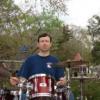
Posted
Here is an original song I wrote called 'Friends & Lovers'. I started it in Synfire Pro, then imported the tracks over to Logic Pro. I also took the chord progression, and imported into Band in a Box to create a melody and some solo riffs. I imported the results back into Synfire Pro, to smooth it out. Those results were also imported into Logic Pro.
I am using a Tyros4, so created I some parts with that also. One mainstring line I played, the supporting harps and strings were generated by Tyros 'String Adagio" style.
I scored it out into an orchestral chart with 20 tracks. I then edited it, cutting out a lot of extra notes.
|
Friends & Lovers -http://www.box.net/shared/s25j27qzkavr5gqtbxym (Copyright 2011 Mark Styles, Pliant Tunes BMI) |
Tue, 2014-01-07 - 01:55 Permalink
I have purchased Synfire, BiaB and Rapid Composer and am currently still trying to figure out what things can be done better with which of these programs.
Based on my findings, I will then decide on an ideal workflow.
I didn't get to learn RC until now but I am already half-way learning Synfire and BiaB.
To me it is rather obvious that BiaB is stronger in creating melodies, solos and bass parts (at least for music styles for which BiaB has a style definition file).
Also it directly supports styles & rhythms which Synfire doesn't.
I have no verdict yet with regards to auto-harmonization and/or support for user-created harmonies.
With regards to the type of music, I feel that Synfire is better for orchesteral/chamber music and soundscores, while BiaB is better for all other types of music for which there are defined styles.
I would be very interested to know about other's opinions as to the strenghts and exclusive features of these programs and about the ideal workflow combining them.
Tue, 2014-01-07 - 10:49 Permalink
Hi Mediterrano,
For me all those programs you mention are musical idea's generators for Synfire.
You can import their midi's ( BIA styles , Yamaha Styles , etc) and make a new song out of it
Example : http://soundcloud.com/janamdo/guitardream made out of a yamaha style
Synfyre offers with the containers a lot of ways to chance the musical form(harmony) and content(phrases)
Key ( for me) is also a thoroughly knowledge of harmony... because in Synfyre the harmony is separated from the phrases ( harmony = form and content = phrases it is the key concept of Synfire 's design)
I think you will be suprized what the influence is of a chordprogression ( put this in dedicated container and place it anywhere you want ) on the arrangement phrases (tracks ).
Chordprogression gives the arrangement a emotional feeling...and the basic form is tonic-(subdominant)-dominant-tonic.
With regards to the type of music, I feel that Synfire is better for orchesteral/chamber music and soundscores, while BiaB is better for all other types of music for which there are defined styles.
I would be very interested to know about other's opinions as to the strenghts and exclusive features of these programs and about the ideal workflow combining them.
Tue, 2014-01-07 - 22:05 Permalink
Hi Mediterrano
I too have those programs. I also use Tyros 5 (now) which generates some great parts.. While these are all helpful tools, I am always mindful of what they are doing, and how I can implement that into my own playing..
I've used Band-in-a-box for 30 years, same as Logic.. I've had the Tyros 3, 4, 5. The Tyros has been a great teacher, cause I record it's instrument generated parts, and I see how efficiently it creates a full orchestration.. Yes, Biab, can make some interesting melodies, bassparts, and sometimes solos..
I think it's also great for creating chord progressions.. I just keep refining it, auto creating chords in small sections, following the suggestions they give, and trying my own ideas.. Once I get a chord progression I like I start from there.
Alas BIAB interface is a 1980's programmer's nitemare.. All these years they just keep tagging features on,, The interface is very cluttered.
SFP takes quite a lot of getting used to.. First it's in a genre by itself.. The concept of seperating, melody, harmony, rhythm, and chords as independent and moveable anywhere is a marvel.. It's taught me a lot about the freedom music can have.. Sometimes I'll adlib a sloppy crazy solo into SFP and then use it's processes to 'fix' the bad notes..
Since SFP can import midifiles. (use BIAB or Yamaha styles) I forget if you can load them directly or change the '.sty' to
'mid'. It is much more powerful than BIAB.. With BIAB after enough use, you beome aware of some of its tricks.. You can create a song 2 years later, that will have a melody very similar to one you did earlier.. That doesn't happen with SFP.
SFP got me on a 3 months experiment, of seeing how many non repeating chords progressions I could use; and have it still sound like music rather than sonic wallpaper.. It was very interesting.. Some pieces were just too lost and wandering, other times I held it together with some repeating instramental themes. and chord substitutions.. It was a great expirement and I learned a lot form it.
Now I cary the idea over into Logic, I'll jam solo's over the song, not worried exactly about notes, more about timing..
I then sort thru these. edit/cut/paste/move etc.. Sometimes I'll take a great improvised phrase and move it over chords it doesn't fit.. I try to think like SFP.. and I hand correct the notes to fit.. I feel I am contributing and understanding more about music than I ever did before. I score things out in Logic and work from that editor, I also print a chord track, (which is not voiced) which helps me to understand the structure.. Why guitar and epianos can can play complex inversions with 6ths,7ths, 9ths, 13th or throw in a quick 4th chord (from current chord), making the chord structure other than it appears to be. And when you improvise and play scales which you think should not fit, but do.. You learn these additions implies a chord structure more complex than you originally intended.
So when I use SFP.. I export in a long linear piece.. Which was not Andre's original intention.. Each of us here are approaching it from different angles. Andre has risen to the challenge in implementing some of our concerns, because we are different and we approach music differently.
I've just got RC, it's simpler and more direct, but seems buggy as hell on my MacPro. I'm particularly interested in the Schillinger generators.. Cause I toyed around with it for a year back in the 70'.. But the music was too mathmetical, and I was too young and impatient. Originally Berklee in Boston taught the Schillinger method of music.. Several great arrangers and composers of the early fifties studied and used it in their music.
I would say you should really focus on each piece of software and decide what's good for you.. Each will take some time to learn and discover the intricasies of each.. SFP is the most complex, with lots of hidden surprises. These pieces of software are like great instruments, you may learn three chords the first day and write a song. But you can spend the rest of your life mastering this software.
I do start pieces in SFP, and use all different loop lengths for different paramters.. It's great for surprise inspiration..
When I've found something I like, I use it.. I also play it (as best I can sometimes), sometimes I'll cut/paste between the two..
My point is, I want to understand the process, and logic of harmony and rhythm. Rather than blindly push 'auto create' buttons, and slap it together.. I've been playing music for 55 years. (65 now)... About 30 years ago, one of my music buddies, quit writing songs, cause he always seemed to write something basically the same.. I listen to some of the greats of the 60's - 80's.. Some of them keep writing the same song over.. In fact, it's hard to place a timing on it, other than note the technology used. Theses tools here force us to change and progress, to grow, and open up to new areas of music, before unavailable to us.
These tools, take us beyond our boundaries.. into unknown terrain.. For the last several years I have been much more into 'arranging'.. I took some online courses at Berklee Music (expensive, but great)... Being a whole lot self taught, it was good to read books, do exercises and understand 'why' something worked.. I often had discovered many of these techniques, and used them kind of subconsiously.. Now I'm interested a lot more in the 'why' of music..
These tools, keep us on our toes, open our minds to new vistas.
Thu, 2014-01-09 - 16:07 Permalink
Hi Mark, thank you for elaborating on your workflow.
I think, rhythm, harmony and sound make up 95% of good music but what really makes the difference is the melody so I intend to limit myself to finding good melodies.
Regarding the rhythm I want to capitalize on BiaB's styles and for finding a matching chord progrssion I intend to let BiaB, SFE and RC compete with eachother.
Nevertheless I intend to keep on learning SFE till I know all of its intricacies just to find out whether I can make heavier use of it to get my musical ideas implement in a lossless manner. Currently, based on the examples I have listened so far, my feeling is that SF is good in creating some good music (esp. for filmscores) but not necessarily good in implementing precisely the musical ideas one has on his mind.
But it might well be that I don't know SF good enough to have a healthy opinion about it.
Thu, 2014-01-09 - 22:23 Permalink
Currently, based on the examples I have listened so far, my feeling is that SF is good in creating some good music (esp. for filmscores) but not necessarily good in implementing precisely the musical ideas one has on his mind.
Well, Synfire is just a set of tools that want to be combined wisely. As with any kind of tool, it takes some time to learn how to use it and combine it with other tools to achieve what's on one's mind. Once you are past this learning curve, you can do everything.
The approach of Synfire is to provide an open environment, sort of a workbench, that supports many ways to achieve things. Rather than offering a specific "generator" with knobs and faders, or a hard-wired "wizard" like workflow, Synfire allows for the free combination of many tools and parameters. Even its creator hasn't yet discovered all of the possible combinations. Other products are certainly quicker to get started with, but at the cost of being less expressive and versatile over the long term.
It's true that Synfire, in contrast to BiaB, doesn't come with a lot of factory phrases. It's a powerful, initially almost empty machine that you need to feed and train with MIDI files or your own recordings, if you want to build on the canon of a particular genre. You would not need that of course, if you go and start your own.
Fri, 2014-01-10 - 00:40 Permalink
I agree with you Andre. Synfire is a tool. The results produced with it are limited by user knowledge. In my case I am using it to write pop latin and pop ballad in English. It is giving me good results, but I know I do not understand chord inversions, interpretation parameters I might not be using them appropriately. I would like for you to continue making more video tutorials, so we can become proficient users and better results will be produce.
Is Synfire giving me the best chord inversions? or do I choose them. Many times I get chords only in the first inversion by default.
Interpretation parameters is an extense, rich resource yet there is no video tutorial on it.
I believe there in nothing out there as powerful as Synfire but the we the users might be limited in what we can do by the learning curve. Once we can tame this animal, there will be total control of this circus (the software).
Musically,
Eduardo
Fri, 2014-01-10 - 01:28 Permalink
It would be helpful if SFP came with a lot more phrase libraries, chord progressions, pieces which we could dissect and examine.. The big issue is it's one overwhelming piece of software time.. And it does not tip the Instant gratification scale.. These simpler products do..
I acknowledge that SFP is in a class by itself, but more phrases, libraries, embedded library example even complete pieces, would make it a lot easieer to 'assimilate' My frustration with Synfire, is I start something; it sounds good, I try another two commands and the magic is gone..
Every product needs to have an 'instant gratification factor' to draw people in.. I'm not asking you to dumb it down, or to cater to everone's particular need.
It just needs to be easier to understand.. I've reached the point, where I do what I can with it.. I've already invested hundreds of hours into it.. And cannot afford to continue to do that.. I am willing to learn.. There is some really mind blowing stuff in it.. When you post the simplist of demos' and it sounds amazing.. I get a bit depressed... Of course you've been playing with it for a very long time..
When you make the videos' PLEASE put a narration talk.. I love you're voice and accent.. It's actually a + to hear the narration by the man who made it,, you don't need to hire a professional speaker.. And at the rate you upgrade things, some of the video are past their expirations point.. Other sites, are explaining version 2 while showing version 1 on screen..
There is nothing more frustrating than following the directions, and you don't get the same menu as the video..
Also assume we are third grades, point out even the very obvious..
Appreciatively,
MarkStyles
Fri, 2014-01-10 - 15:02 Permalink
I think when you imported a midi , than Synfire comes up with some chords ( also withthe harmonizer )
Is Synfire giving me the best chord inversions? or do I choose them. Many times I get chords only in the first inversion by default.
you can loop the chordprogression ( = arrangement) and then chance the inversion of the chords in real time ( by using the number keys of your computer keyboard : triads( 1 = root chord ,2 = first inversion ,..) and sevent chords (1 = root chord ,2 = first inversion, .. ) and listen to the chanced arrangement..this must be working .. i tested now with a demo arrangement..yes but the option must be set of <<Playback<< instant feedback
Now you can chance the chords in the progression in root or inversions
I know triads and seventh chords you have inversion from it, but how about 9 , 11, 13 chords ( probably do these chords do have also 4 notes ? ..but inversions from these? ..experiment
It is not difficult to add a new container under the original chordcontainer and experiment with the inversion here, but in the case of the arrangement demo it seems to be impossble to add a empty chordcontainer at the bottom as long the arrangement is for a new chord progression to exeriment with.
Also i noticed a - under the chordname .. it don't show what inversion ( or not is used )..maybe there is option for this ?
Once you press a numberkey( 1 as example) with a selected chord ..you get a number 1 in the chord rectangle
So you don't now the startposition of Synfire chordprogression..once chanced with a number you don't probably get it back to the original chord ( by import ) ?
Suppose you are be able to get a container at the bottom over full length and fill this with chords than the chords in the containers beneath are not in play
If you should get a chord bottom container, than you can try with this finetune your chordprogression with root and inversion ( i don't know if Synfire comes up with the best voice leading for the chords .. i assume ..yes), but i you feel the need to listen to chords root/inversions..hoping it gives a better subtle sounding chord changes ?
Also possible is to use the progression editor for experimenting with inversions other then in the arrangement screen and i did it for 9 chords and inversions--> live chord detection shows the keys pressed
The 9 chords are 5 note chords, but when you write for 4 parts ( stringssection) one of the five notes must be omitted
this is voicing a ninth chord in four parts and practical.
The chord progression cannot be looped and than chancing in real -time the chords, you must every time start over again the progression, but i can be stay looped.




